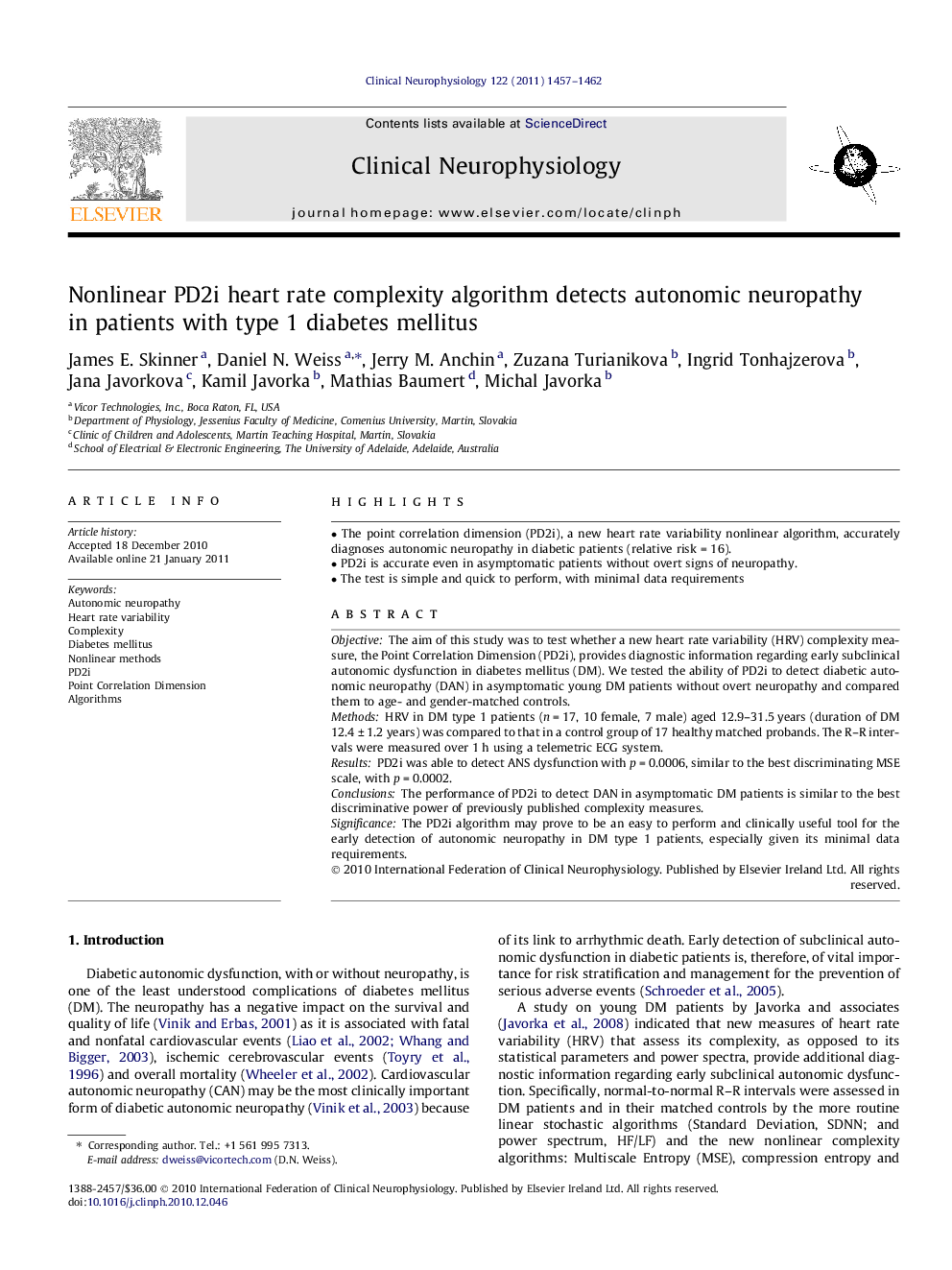| Article ID | Journal | Published Year | Pages | File Type |
|---|---|---|---|---|
| 3044792 | Clinical Neurophysiology | 2011 | 6 Pages |
ObjectiveThe aim of this study was to test whether a new heart rate variability (HRV) complexity measure, the Point Correlation Dimension (PD2i), provides diagnostic information regarding early subclinical autonomic dysfunction in diabetes mellitus (DM). We tested the ability of PD2i to detect diabetic autonomic neuropathy (DAN) in asymptomatic young DM patients without overt neuropathy and compared them to age- and gender-matched controls.MethodsHRV in DM type 1 patients (n = 17, 10 female, 7 male) aged 12.9–31.5 years (duration of DM 12.4 ± 1.2 years) was compared to that in a control group of 17 healthy matched probands. The R–R intervals were measured over 1 h using a telemetric ECG system.ResultsPD2i was able to detect ANS dysfunction with p = 0.0006, similar to the best discriminating MSE scale, with p = 0.0002.ConclusionsThe performance of PD2i to detect DAN in asymptomatic DM patients is similar to the best discriminative power of previously published complexity measures.SignificanceThe PD2i algorithm may prove to be an easy to perform and clinically useful tool for the early detection of autonomic neuropathy in DM type 1 patients, especially given its minimal data requirements.
► The point correlation dimension (PD2i), a new heart rate variability nonlinear algorithm, accurately diagnoses autonomic neuropathy in diabetic patients (relative risk = 16). ► PD2i is accurate even in asymptomatic patients without overt signs of neuropathy. ► The test is simple and quick to perform, with minimal data requirements
